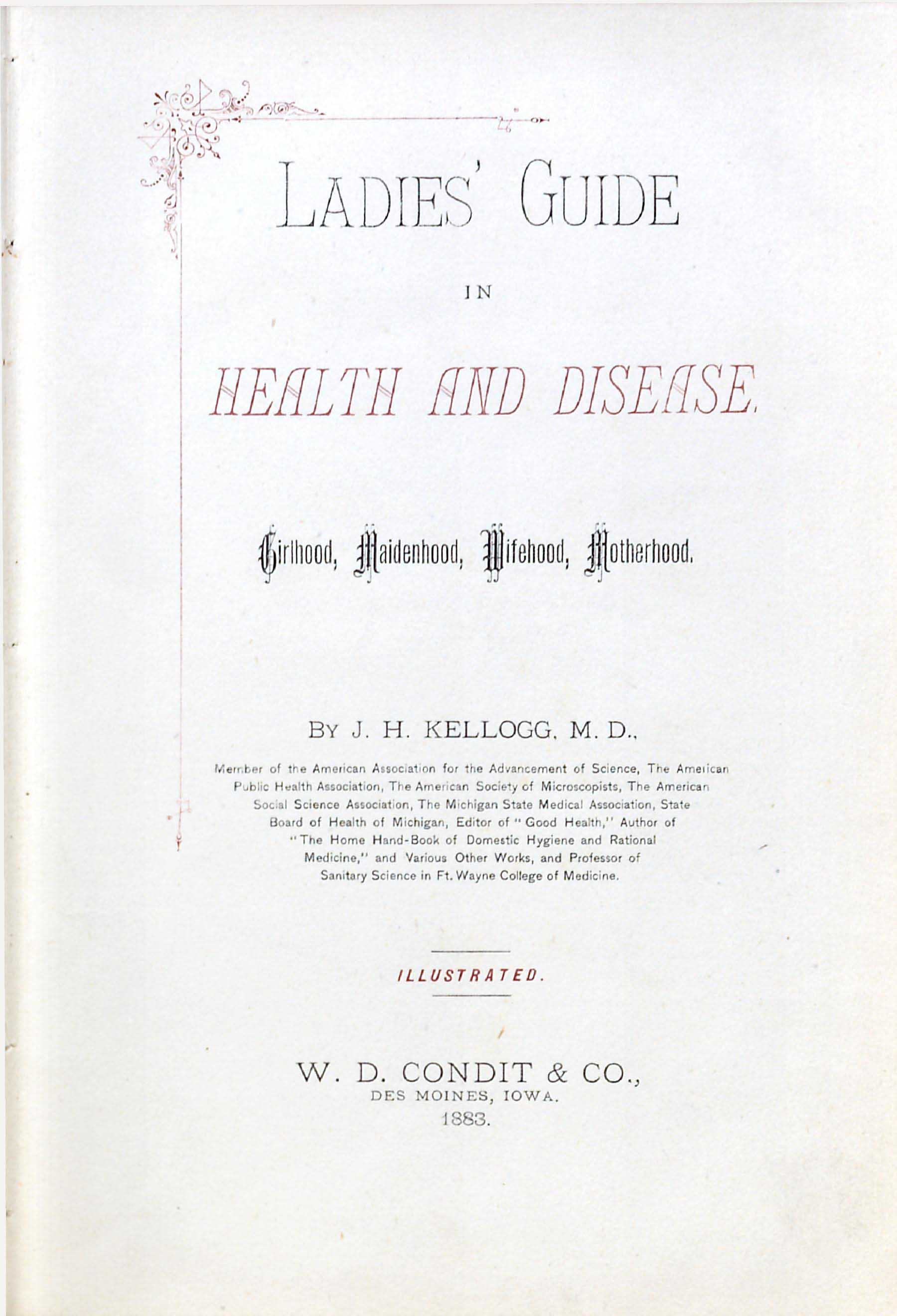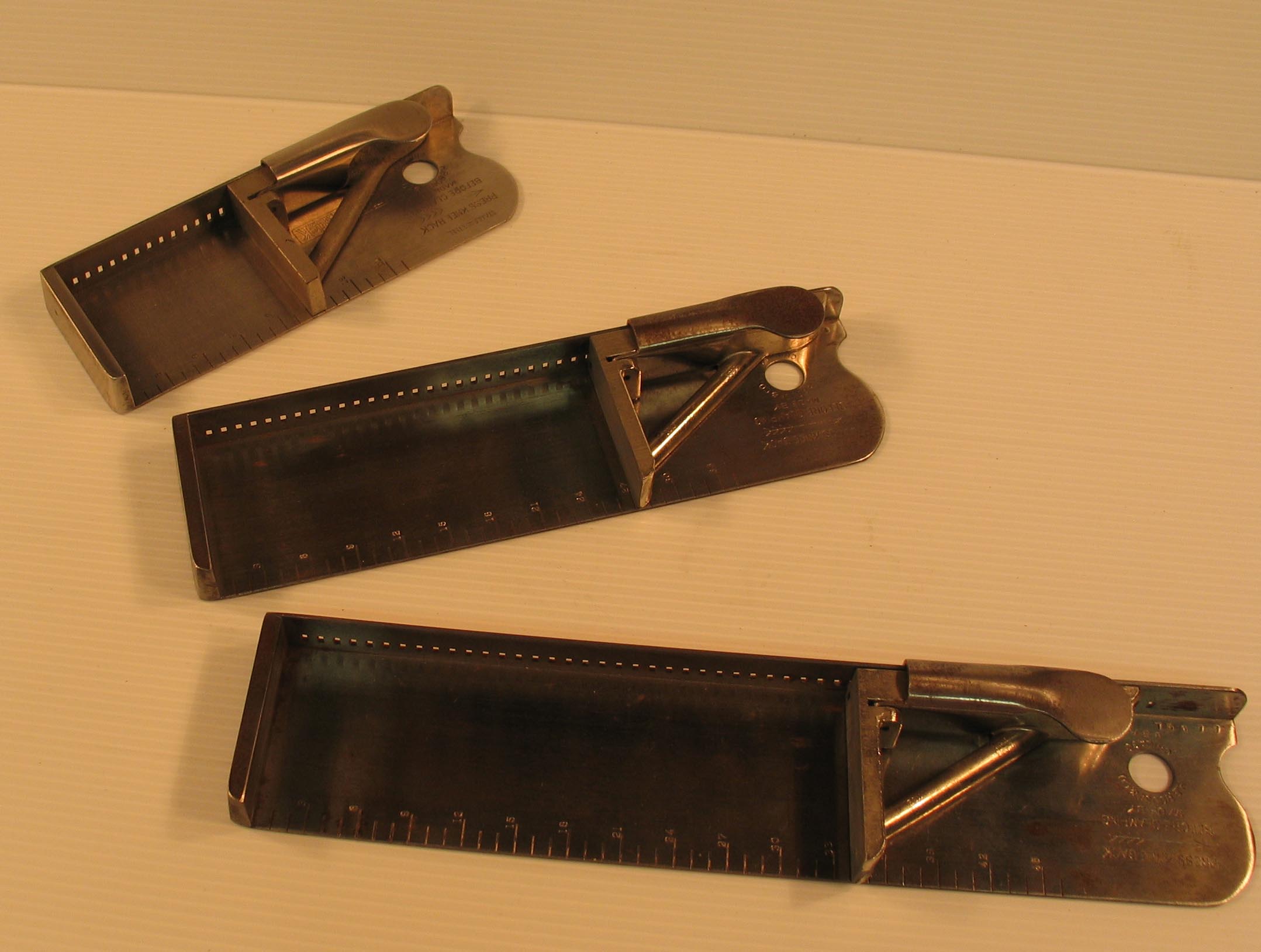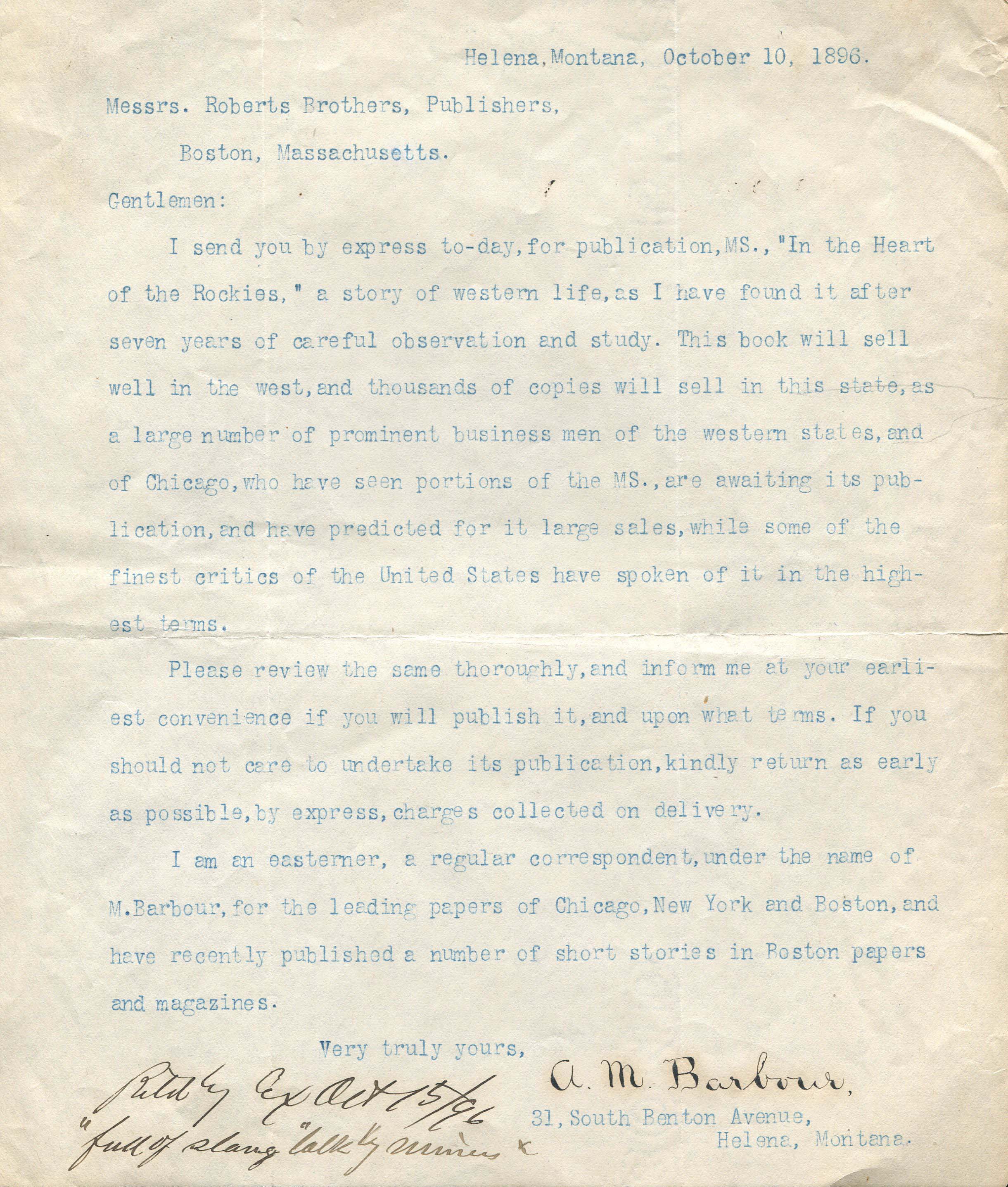 We have two proof planers (or “planing blocks,” one large and one small), and one wooden mallet. These are used in planing type–that is, leveling the type in the form (i.e., the term for set page(s) locked in and ready for printing) to make sure that it is standing on its feet. If one letter is the least bit higher than the others on the bed, it will foul the impression. It is fascinating to me how much precision is required in every aspect of printing. Think of this the next time you blithely press the print icon on your computer–in less than a second, you can accomplish what it took past generations years to produce.
We have two proof planers (or “planing blocks,” one large and one small), and one wooden mallet. These are used in planing type–that is, leveling the type in the form (i.e., the term for set page(s) locked in and ready for printing) to make sure that it is standing on its feet. If one letter is the least bit higher than the others on the bed, it will foul the impression. It is fascinating to me how much precision is required in every aspect of printing. Think of this the next time you blithely press the print icon on your computer–in less than a second, you can accomplish what it took past generations years to produce.
Archive for the ‘Uncategorized’ Category
For the next two days I’ll be blogging from Columbia, South Carolina, on the beautiful USC campus, attending a two-day seminar on “Understanding the Medieval Book.” Thirty (30) attendees from 12 states have come together for four workshops and two evening lectures given by Christopher de Hamel, a world authority on medieval (especially illuminated) manuscripts. Each workshop will focus on one genre of medieval book: the Bible, the Book of Hours (horae), the Breviary, and the Missal.
The Bible
As de Hamel notes in his The Book. A History of the Bible (2001), “probably more has been written about the Bible, over a longer period, than about any other subject. More manuscripts of the Bible, or parts of the Bible, survive from the Middle Ages than any other tangible artefacts.”
Books of Hours
“A Book of Hours is a compendium of different devotional texts which the owner could read in private … the core of the manuscript (usually about a third of the way through the volume) comprises the Hours of the Virgin: a standard series of prayers and psalms intended to be used in honor of the Virgin Mary at each of the canonical hours of the day. These are Matins, Lauds, Prime, Terce, Sext, None, Vespers, and Compline.” (de Hamel, A History of Illuminated Manuscripts (1986, rev. 1994)–same for next two).
The Missal
A “fundamental distinction in the services of the late medieval Church is between the Mass and the daily offices. These were completely different in function and in form. The Mass is the communion service or Eucharist, one of the most solemn and important Sacraments of the Church, instituted by Christ at the Last Supper and consisting of consecrating and partaking of the bread and wine which represent the body and blood of Christ. It was celebrated at the altar, and its service-book was the Missal.”
The Breviary
“The Mass is not to be confused with the daily services performed in the choir: Matins, Lauds, Prime, Terce, Sext, None, Vespers and Compline. We discussed the shortened version of these offices in the chapter on Books of Hours. They are not sacramental services, but are basically prayers and anthems in honor and praise of Christ and the saints. Their service book was the Breviary. In the eighteenth and nineteenth centuries, antiquarians used to call any medieval liturgical manuscript a ‘Missal’ (be cautious therefore of titles added on the spines of manuscripts), and even now cataloguers confuse Breviaries and Missals. To the medieval mind, this would be unthinkable.”
Eat your Corn Flakes!
Here’s a 700-page nugget from the stacks, for those American Culture folks:
John Harvey Kellogg, of breakfast cereal fame, published this Ladies’ Guide in Health and Disease: Girlhood, Maidenhood, Wifehood, Motherhood in 1896. Kellogg was “famed for promoting vegetarianism, sexual abstinence, and the liberal use of enemas,” and “here offers a straightforward and in some ways highly progressive (for its era) discussion of women’s health at all stages of life, focusing on developing a ‘higher type of womanhood’ (iii), one free from unnecessary invalidism and susceptibility to disease. Kellogg denounces corseting, unsurprisingly, and also condemns the extreme differences in treatment of little boys and girls, which resulted in the latter becoming both mentally and physically but poor shadows of the vibrant women they might have been. Although staunchly opposed to birth control and abortion, he also insists on married women’s freedom from unwanted ‘marital excesses’: of all the rights to which a woman is entitled, that of the custody of her own body is the most indubitable (p. 341)” [PRB&M description].
 In the Watkinson we have a copy of Memoir of the Northern Kingdom, by William Jenks, possibly the first American fantasy tale. It appears from its title-page to be a collection of letters written from the Rev. William Jahnsenykes to his son in 1872, and published in 1901 in “Quebeck.” This was actually written by Jenks (1778-1866), and published in Boston in 1808.
In the Watkinson we have a copy of Memoir of the Northern Kingdom, by William Jenks, possibly the first American fantasy tale. It appears from its title-page to be a collection of letters written from the Rev. William Jahnsenykes to his son in 1872, and published in 1901 in “Quebeck.” This was actually written by Jenks (1778-1866), and published in Boston in 1808.
Funky? Oh yeah.
This is a fantasy satire on Jeffersonian politics and a rare example of early American fantastic fiction, cast as an epistolary history, in which the United States has split into three nations: a Northern Kingdom (New England, New York, and Canada) ruled over by an English viceroy (New England joins the Northern Kingdom after a war with Virginia); a francophone Southern slave-holding kingdom ruled by a branch of the Bonapartes; and the Illinois Republick, which alone retains the principles of the American Revolution.
For a fuller account of this publication and of Jenks, see the blog by the redoubtable Jeremy Dibbell at the Massachusetts Historical Society, which has Jenks’s papers: ( http://www.masshist.org/blog/454 )
We have some nice composing sticks already, but if we do get a real printing club going, we’ll need a few more.
This is a hand-held, three-sided tray in which type is set and justified to a specific measure. Modern sticks are two-sided trays with an adjustable third side called a knee. The types are placed against the long side of the stick. We have three different sized sticks in the Watkinson, shown here. To set type, you stand at the case (the tray of letters, each arranged in little boxes) and set each letter one at a time, backwards. Depending on the font size, you can do several lines before placing them on the press to be locked in.
So here is my first post on the equipment we already have in the Watkinson for our little print shop. Thanks to Joe Laws (’12) for his work in organizing and photographing these for the blog! Most of the definitions are taken from Rummonds’ Printing on the Iron Hand Press (1998), but I will not bother with quotes and page references–buy the book if you are that interested!
 The line gauge is a rule or stick to measure the width and length of composition calibrated in picas [the printer’s unit of measure equivalent to twelve points–used to express the width and depth of the text and type page]. It is usually 72 picas long, and is also called a “gauge,” “pica gauge,” or “type gauge.”
The line gauge is a rule or stick to measure the width and length of composition calibrated in picas [the printer’s unit of measure equivalent to twelve points–used to express the width and depth of the text and type page]. It is usually 72 picas long, and is also called a “gauge,” “pica gauge,” or “type gauge.”
NB: The American Point System, which was adopted in 1886 by the United States Typefounders Association, is the standard in the U.S. and U.K.; it consists of two units of measure: the point and the pica; the point =0.13832 inches (0.351 mm), and one pica = 12 points. Type sizes and their spacing material is given in points; line lengths are measured in pica.
SASS schedule
Databases and bibliographies are not, frankly, very sexy (at least not to most of us). As an antidote, I’ve come up with a new instructional model, called Short Attention-Span Seminars (or SASS). The idea is simple. Each weekly, 15-minute session (held Wednesdays at 10:00am in the Watkinson) is focused on one tool (a database, bibliography, etc.) that I deem essential for humanities research. This can range from the Dictionary of Literary Biography (DLB) to Eighteenth Century Collections Online (ECCO). I also like to show at least one rare book from the collection, related in some way to the source of the day. As an incentive, I am offering a coupon for a free coffee or tea at Peter B’s (the café in the library) to anyone who shows up.
My goal for this series is threefold: first, to introduce students, faculty, and staff to resources they may not know about or under-appreciate; second, to show off a bit of the rare collection which is normally locked away from casual visitors; and third, to offer an informal, regular venue that could serve as a place to announce upcoming Watkinson events to interested members of the Trinity community.
So here is an example of how a the seminar might go: You show up at the Watkinson at 10:00am sharp (because if you are late, you’ve missed it!), and I start talking about a resource—say, Early American Imprints, Series I (digitized copies of every book printed in the U.S. from 1639 to 1800). I talk about how to use the source, its scope and content, and show (for instance) the Watkinson’s copy of the first edition of the Federalist, which is also in the online version, accessible from your dorm or home. At 10:15 I’m done talking, and you can either ask questions or be on your way to get your free beverage, wiser and refreshed! What’s not to like? For a schedule of the seminars, email me at richard.ring@trincoll.edu.
Richard Ring
Spring Term Schedule:
Wednesday, January 26, 10:00am
Wednesday, February 2, 10:00am
Wednesday, February 9, 10:00am
Wednesday, February 16, 10:00am
Wednesday, February 23, 10:00am
Wednesday, March 2, 10:00am
Wednesday, March 9, 10:00am
Wednesday, March 16, 10:00am
Wednesday, March 30, 10:00am
Wednesday, April 6, 10:00am
Wednesday, April 13, 10:00am
Wednesday, April 20, 10:00am
Wednesday, April 27, 10:00am
Far out, man!
 As anyone who has had experience with archives knows, you can find wonderful things buried in the files. One of our student workers came across this fabulous artifact (four of them, in fact), while organizing the personal papers of the late J. Fred Pfeil, donated to the archives by his family. Dr. Pfeil was a beloved English professor at Trinity from 1985 until his untimely death in 2005.
As anyone who has had experience with archives knows, you can find wonderful things buried in the files. One of our student workers came across this fabulous artifact (four of them, in fact), while organizing the personal papers of the late J. Fred Pfeil, donated to the archives by his family. Dr. Pfeil was a beloved English professor at Trinity from 1985 until his untimely death in 2005.
The student was thrilled to discover four tickets to the second “day of peace and music” at Woodstock. Fred would have been 19 when he attended (his birthday was September 21, so he was almost 20), and this would have been just before his sophomore year at Amherst College.
Peace be with you, Fred–many here still miss you.
Open House a success!
I’m happy to say that we had a successful Open House last Friday. Some forty people visited the Watkinson between 10am and 2pm, including Board members, faculty, students, and interested “townies.” The day also yielded two volunteers which will soon be working on a digitization project, and two gifts to the collection.
 The first is Dove at the Windows: Last Letters of Four Quaker Martyrs (Penmaen Press, Lincoln, MA, 1973). With a foreword by George Selleck & five woodcuts by Michael McCurdy, this is a fine press book limited to 200 numbered copies (this is number 199) and signed by McCurdy. It was printed by hand in Palatino on Nideggen paper from Germany, and reprints the surviving letters written by four American Quakers who were put to death in Boston between 1659 and 1661. The Watkinson does have another copy (number 62), but in teaching about letterpress and bibliography it is often good to have two copies of a hand-made work to use for comparison.
The first is Dove at the Windows: Last Letters of Four Quaker Martyrs (Penmaen Press, Lincoln, MA, 1973). With a foreword by George Selleck & five woodcuts by Michael McCurdy, this is a fine press book limited to 200 numbered copies (this is number 199) and signed by McCurdy. It was printed by hand in Palatino on Nideggen paper from Germany, and reprints the surviving letters written by four American Quakers who were put to death in Boston between 1659 and 1661. The Watkinson does have another copy (number 62), but in teaching about letterpress and bibliography it is often good to have two copies of a hand-made work to use for comparison.
The other gift is related to our wonderful collection of works published by the firm Roberts Brothers, of Boston.
This is a letter to the publishers which apparently came with a manuscript of a novel titled “In the heart of the Rockies,” by an A. M. Barbour. There is a note on the bottom of this query letter–the manuscript was apparently returned by express, because it was “full of slang talk by miners.” One really wished to have that manuscript now! Interestingly, a novel with the same title by the famous G. A. Henty was published two years before (1894) by Scribners in New York. This letter will join our manuscript collection on the Roberts Brothers, described here:
http://library.trincoll.edu/research/watk/manuscripts/RobertsBrothersCollectionInventory.htm
 In my final letterpress class on Saturday I set and printed (with the help of my compatriots) 160 invitations to our open house, which will be sent to “local” members of our Associates. I invite anyone on campus to come by on Friday, February 11 from 10am to 2pm for cookies, cider, and other light refreshments to see some of our new acquisitions in the cases and talk with me about some of the things we are looking forward to at the Watkinson.
In my final letterpress class on Saturday I set and printed (with the help of my compatriots) 160 invitations to our open house, which will be sent to “local” members of our Associates. I invite anyone on campus to come by on Friday, February 11 from 10am to 2pm for cookies, cider, and other light refreshments to see some of our new acquisitions in the cases and talk with me about some of the things we are looking forward to at the Watkinson.
Here is the printed invite:
Of the valuable lessons I learned during the setting of this piece (which took about an hour–at least 20 times slower than a 19thC typesetter!): the relevance of the old saw “mind your p’s and q’s,” as well as a caution about working with old (worn), and possibly mixed type. Several of the letters most used (“e” and “r in this case) needed to be switched out because they were not achieving type-height, and so were not printing. Justification is another activity that will take a lot of time to get a handle on.
On another level, I had occasion to think about the care and feeding of a printshop, and the materials one chooses to use. If you are a “green” shop and use vegetable oil to clean ink off the type, it sticks together if not properly dried. In general, frankly, it is best to run a tight shop, so to speak, and make sure everything is clean and in order when you leave, if possible. It makes such a difference. Here is a short video of me printing the invitation:



